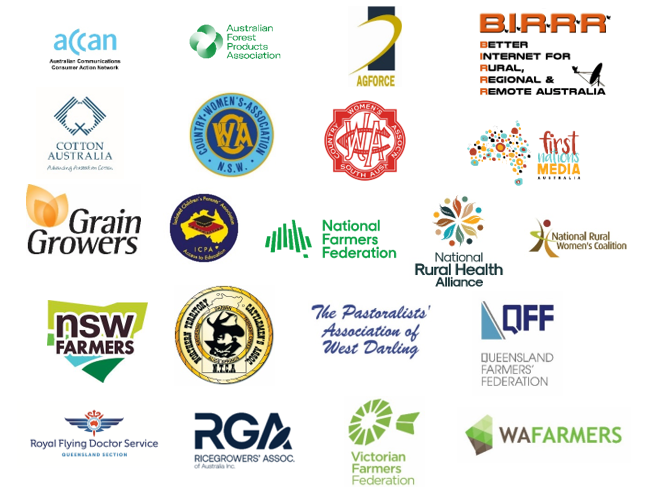While important progress has been made in recent years, the need for reliable, affordable, quality connectivity services remains as important as ever in regional, rural and remote Australia.
This is the message the Regional, Rural and Remote Communications Coalition (RRRCC) delegation will deliver to Parliamentarians in Canberra today.
The RRRCC incorporates 21 respected community groups, advocacy and industry organisations dedicated to improving connectivity in the bush. Today 25 advocates from around Australia have travelled to Parliament House and are meeting with over 45 politicians to continue to raise awareness of regional communications.
Australian Communications Consumer Action Network CEO, Andrew Williams said that the group was a great demonstration of the power of collective action to instigate positive change.
“The RRRCC was formed in 2016 when a group of like-minded organisations came together to advocate for improved connectivity in the bush. While much has changed since then, the drive and determination of the group to improve the connectivity outcomes and opportunities for non-metropolitan Australians remains as strong as ever,” Mr Williams said.
“The enthusiasm of the delegates was only matched by the enthusiasm of parliamentarians to meet us. We are particularly pleased with the number of first-term parliamentarians and cross-benchers who have reached out to learn more about regional connectivity.”
National Farmers’ Federation representative, Peter Thompson, outlined that while important progress had been made in recent years, ongoing improvements were critical in underpinning the future social, education, health, and economic opportunities for the 38% of Australians who live outside of metropolitan areas.
“We live in an increasingly digital world, where people’s connectivity and digital access play a significant role in their ability to not only access vital services such as government support, banking, medical, education and social services, but to take advantage of the economic opportunities of that digital access and inclusion offers,” Mr Thompson said.
“Take for example the agriculture industry that my family operates in, where we know that widespread digitisation could add more than $20 billion to GDP. This will have flow-on impacts not just for regional communities, but the entire country.”
The 2023 RRRCC delegation will advocate in Canberra for the following 5 key connectivity goals:
- A national regional, rural, and remote strategic framework and plan for future development and investment in regional communications;
- Affordable communications services for regional, rural, and remote Australia;
- Guaranteed access to equitable voice and data services that meet minimum service standards;
- Continued program to expand mobile coverage (both voice and data) and improvement in data speeds through an increased capacity; and
- Funding and implementation of Connectivity and Digital literacy capacity building for regional, rural, and remote Australia.
Better Internet for Regional Rural and Remote Australia representative Sharon Single, said the delegation wasn’t in town to complain, it was there to advocate for practical solutions policy makers could adopt in a bipartisan manner.
“We have come to Canberra armed with a list of practical ways government can plan for future development and investment in regional communications,” she said.
“Since the 2019 delegation to Canberra we have welcomed ongoing investment to support mobile black spot coverage and improved access to broadband data services, particularly via satellite. However, challenges still persist.
“There is a patchwork quilt of connectivity across our landscape and a significant portion of our population do not have reliable access to voice and data services.
“Congestion and capacity of the mobile network will get worse, the transition from 3G will be a challenge and poor connectivity literacy for home broadband internet solutions needs to be addressed.
“Connectivity literacy barriers – getting connected, staying connected and troubleshooting a connection – are a significant issue, particularly in the bush.
“It is important for policy makers to consider long-term strategic investment in rural, regional and remote communication investment and recognise the importance of pre-planning for connectivity resilience in the face of natural disasters.
“Connectivity and digital solutions are available for people, but we must put in place the right frameworks to support them. We hope politicians of all stripes will see the merit in the solutions we have proposed.”

Photo of delegation available upon request.




